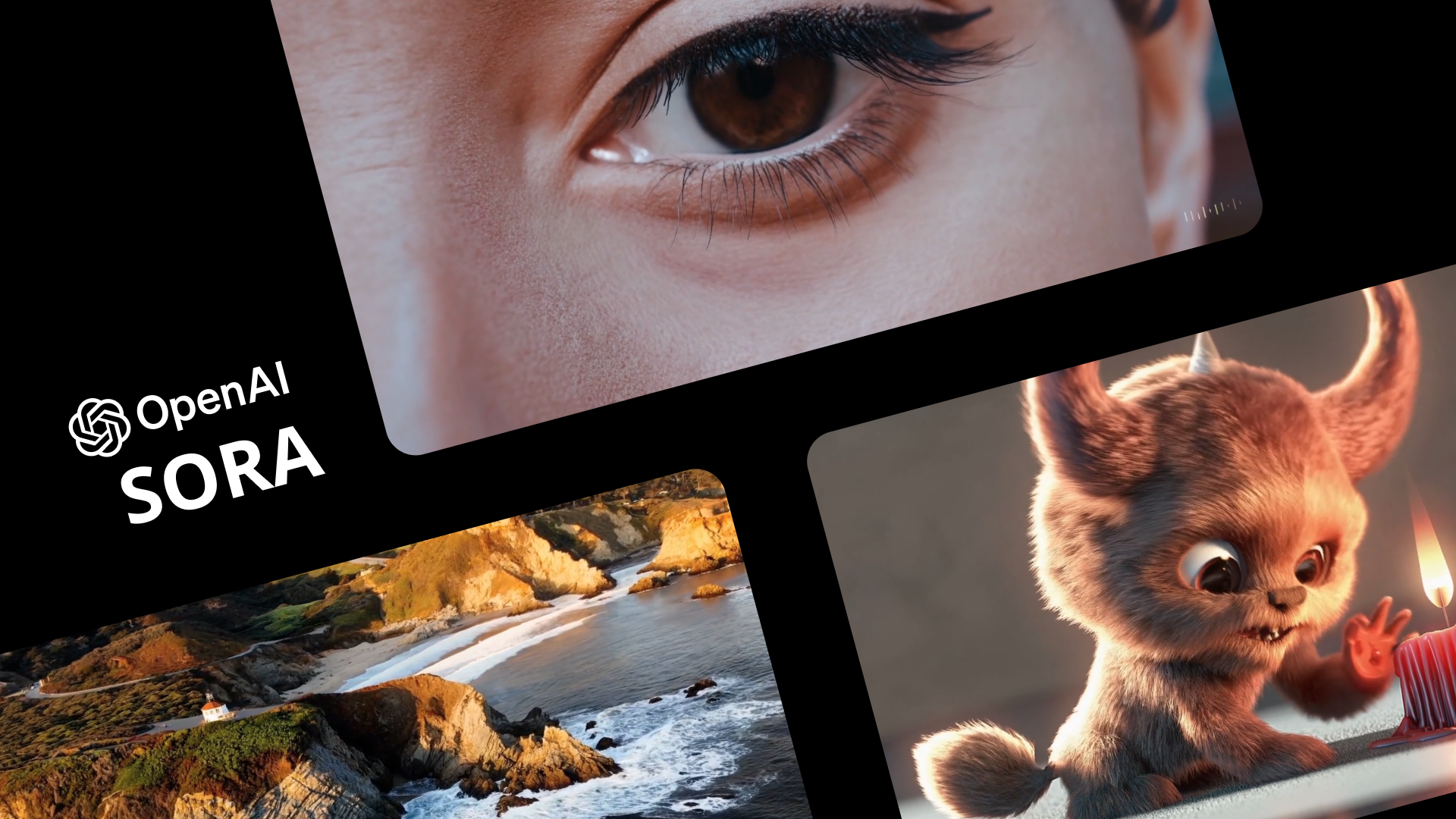In the evolving landscape of generative artificial intelligence, OpenAI's introduction of Sora, a sophisticated text-to-video model, marks a significant milestone. This innovative technology extends beyond the realms of static imagery and simple animations, offering the ability to create detailed, minute-long videos from textual prompts. Sora's development underscores a remarkable leap towards understanding and simulating the complexities of the physical world in motion, showcasing the potential to revolutionize content creation across various sectors.
Prompt: Drone view of waves crashing against the rugged cliffs along Big Sur’s garay point beach. The crashing blue waters create white-tipped waves, while the golden light of the setting sun illuminates the rocky shore. A small island with a lighthouse sits in the distance, and green shrubbery covers the cliff’s edge. The steep drop from the road down to the beach is a dramatic feat, with the cliff’s edges jutting out over the sea. This is a view that captures the raw beauty of the coast and the rugged landscape of the Pacific Coast Highway.
Competitors like Runway ML Gen-2 have been pushing the boundaries of AI text-to-video generation for a while. While the results of Gen-2 are decent, you can still very much differentiate the AI generated footage from real-world video footage. The development of Sora changed that (at least that’s what we think), mainly because of the way it has a better understanding of real world physics. How exactly this is achieved is rather difficult to tell just yet, but it probably combines real world training data like iphone video content with physical graphics models like Unreal Engine.
Prompt: Reflections in the window of a train traveling through the Tokyo suburbs.
It feels crazy to say that this simple video filmed from a train is making our brains melt, but it is. The details in the landscape, the way the window reflections interact and the consistency of the lighting in the video are unmatched. It feels crazy that the AI got that good.
What sets Sora apart is not just its technical prowess in generating visually compelling content but its ability to grasp and interpret the nuances of human language, translating abstract concepts into dynamic visual narratives. This capability opens new opportunities for storytelling, educational content, and even simulations for training purposes, where nuanced and context-specific scenarios can be brought to life with ease.
However, the journey of Sora is not without its challenges. As it navigates the intricate balance between creativity and realism, issues such as simulating complex physics accurately and maintaining consistency in spatial details over time are areas of ongoing development. OpenAI says it’s committed to refining these aspects, ensuring that Sora evolves to meet the high standards set by its creators and users alike.
Prompt: A litter of golden retriever puppies playing in the snow. Their heads pop out of the snow, covered in.
Beyond the technical achievements, OpenAI's approach to Sora's development and deployment is noteworthy. In an era where the ethical implications of AI are increasingly scrutinized, OpenAI has prioritized the creation of a responsible framework for Sora's use. Collaborating with experts in the field and developing sophisticated detection tools to mitigate the risks of misuse.
In essence, Sora is not just a technological marvel; it's a beacon for the future of AI-driven creativity. By merging the art of storytelling with the science of machine learning, it invites us to reimagine the boundaries of what is possible. As we look forward to the advancements Sora will bring to digital media and beyond, it also prompts a reflection on the responsibilities that accompany such powerful tools.
As Sora continues to evolve, it represents more than just the next step in AI's capabilities—it embodies the potential for a new era of creative expression, powered by the synergy between human imagination and artificial intelligence. The journey of Sora is just beginning, and it promises to be as exciting as it is transformative.
From a digital creative agency perspective, OpenAI's Sora is a game-changer, offering unparalleled text-to-video generation. It enables agencies to produce innovative, custom video content swiftly, transforming client visions into reality with ease. However, it also necessitates a responsible approach to AI use, emphasizing ethical considerations and content integrity. This advancement not only boosts agency capabilities but also redefines client engagement strategies in the evolving digital landscape.
As of now (feb,2024) the model is still in beta testing, where OpenAI stated they will do a testing phase with a selected group of content creators to see what the feedback is. Eventually opening up to the general public, but a clear timeline is not yet established.
For a deeper dive into OpenAI's Sora and its capabilities, visit OpenAI's official page on Sora.


